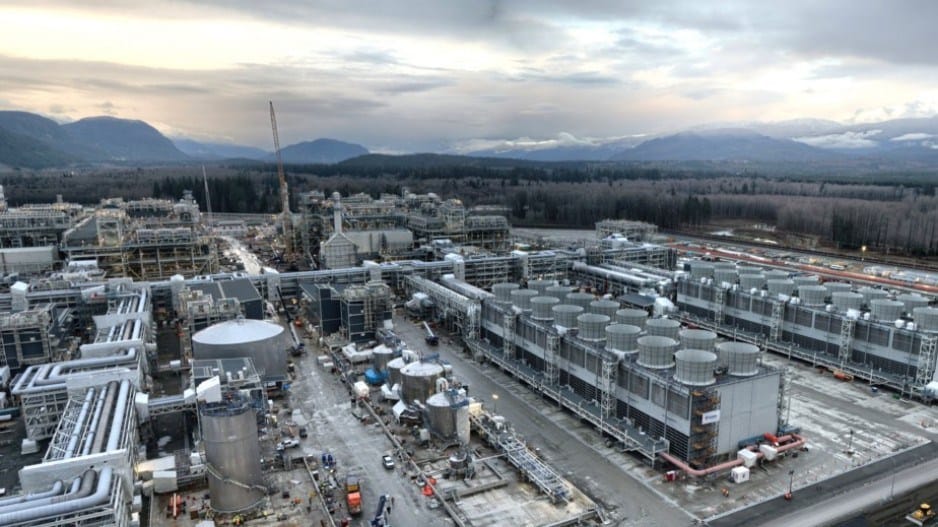
British Columbians have been debating the future of liquified natural gas (LNG) for over a decade at this point. There are many reasonable aspects on each side of the debate, including the need for local economic development in rural communities, and BC's inability to meet our climate targets if we expand LNG too much. But one aspect of the debate I find completely and utterly tedious is the idea that BC is going to sell our LNG to other countries and receive carbon credits in return for doing so.
The idea, long-promoted by LNG proponents, is that LNG is a "transition fuel" (while there are some very, very specific cases where this may be true, it is not a panacea) and that by exporting our low-carbon LNG to other jurisdictions (especially China), it would allow them to move off coal and we would get "credit" for having helped them do so.
A lot of this is under the auspices of something called "Article 6," which is part of the original Paris Agreement and has been a major area of negotiations for Canada over the past few years. Article 6 is very complex, so, I love this great explainer from Beatriz Granziera at The Nature Conservancy from an overview a few weeks back.

For this kind of transaction to work (especially being ship-shape with international climate agreements), a country would need to be willing to set up a specific trade deal that involved the private sector producer of LNG and the BC Government (which would need the credits). Despite the fact that the country and the power producer buying the LNG would be spending all of the money on their infrastructure, retiring their coal-fired powerplants, and buying the LNG (presumably at a market rate), they would then need to agree to give the BC Government (and not just the company) the credit for all of the help we've provided.
(A great thread on started by Aaron Cosbey, below, which inspired some of my thinking that follows)
Could Canada ever get credit for the emissions it displaces when other countries burn its LNG?
— Aaron Cosbey (@AaronCosbey) July 5, 2023
Danielle Smith says so. The Feds sound sympathetic.
My take: it's cynical distraction from real climate action. They all know it will never happen.https://t.co/Ces3Fd8Bwe
There are a few challenges with this thinking, though:
- If a country, let's say China, was making this investment to reduce their carbon emissions by scrapping a coal plant, it's unclear why they would then give the credit to another country or company.
- It's even less clear why they would give another country the credit after spending all of the money to do this themselves (i.e., replacement plants, buying LNG at market value, etc.)
- In the jurisdiction producing the gas, furthermore, it's unclear why they would subsidize the extraction of LNG (as we do throughout Canada in various ways), thereby increasing our emissions, and then use a complex legal structure to zero out the emissions we created in our jurisdiction to help someone else.
- Lastly, as more and more studies are starting to show, the actual GHG reductions associated with LNG are becoming more and more tenuous as we recognize the role of methane that leaks play in increasing the actual emissions intensity of LNG.
Advocates will be correct in saying that it is legally permissible for all of this to happen, but I continue to come back to the fundamental question: why bother?
Headwinds for LNG in BC
Anil (Andy) Hira and his great team at SFU earlier this year really wargames out these ideas brilliantly in their February 2023 paper on BC's LNG industry.
 Simon Fraser University
Simon Fraser University
Their work covers a few different dimensions, including (1) looking at the global economics of LNG production, distribution, and sale; (2) reviewing the environmental concerns around gas in general; and lastly (3), reviewing the specifics of BC's "LNG play."
Production and Distribution Challenges
As they say about the production and distribution side:
The EU has closer producers, such as Algeria, Norway, Israel, and Texas among others who are ramping up production and developing pipelines. The same holds regarding competitiveness on a large-scale in Asian markets; there are much closer and cheaper producers of pipeline NG for China, Japan, and South Korea, from Russia, and Central and Southeast Asia. Thus, the principal benefits BC LNG would bring are diversification of secure energy supply. Given Canada’s fraught relations with China, it’s probably not enough of a factor to compensate for a lack of competitiveness in production and transport costs. The US is much closer to the EU, and therefore can cover shortages until an array of suppliers from Norway to North African and Middle Eastern producers ramp up.
They showcase just what a wide and diverse field of competitors that BC is stacked up against, most of which already have active production and strong growth over the past decade.

In addition to our relative immaturity, compared to other markets, BC also suffers from a distinct geographical - and therefore transportation cost - disadvantage. The report covers a few key producer comparisons and notes that:
India relies heavily on Qatar, which is its most proximate supplier given the Himalayas and Afghanistan create formidable geographical barriers to pipelines from the Middle East or Central Asia. Circling back to our original data exposition of reserves, Iran and Russia will likely be the lowest cost large suppliers to Asian markets in the coming years once they can overcome sanctions affecting their ability to build new infrastructure. Already, both countries have kept their economies afloat despite sanctions by selling petrol to Asian markets.
Even for more immature sites of production with greater instability than BC, the geographical advantage (and concurrent political and cultural ties), further stacks against us:
As we note below, Turkmenistan, Kazakhstan, Myanmar, and Malaysia are best positioned to supply pipeline NG to China. With so many local suppliers, and BC’s and Asian producers’ long distance from the EU, the Middle Eastern and North African producers are in the best situation to respond to new EU demand growth, due to sanctions on Russia, not BC.

Environmental Concerns
The Hira report also talks about the validity of LNG as a true transition or bridge fuel as we work towards deep decarbonization and net zero. They do not dwell on it extensively but do reference the 2020 paper from Hmiel et al which has been one of the canaries in the coal mine for re-examining the amount of methane that "leaks" during the gas extraction and production processes. To summarize the paper as best I can, they effectively re-interpret the balance of what methane is emitted from natural sources and what comes from humans. They find that human-related methane emissions are likely 25-40% off of current estimates (by between 38 to 58 tetragrams).

This research, combined with prior work like this 2022 piece from Omara et al, or this older one from 2014, all show that we are underestimating the amount of leakage from most facilities. And while BC has made a commitment to the highest possible environmental standards, the BC Climate Solutions Council (which I have the privilege to sit on) has sounded the alarm more than once around emissions assumptions for these kinds of projects.
This is critical for two reasons, firstly because it puts the whole raison d'etre of LNG into question since it has to be truly low carbon to make sense. And secondly, it also raises the specter of BC being in an even more difficult position to reduce its own emissions.
The Bottom Line
BC doesn't have an impossible position when it comes to gas. It will be with us for years to come, and very likely BC will have a few projects that will produce fuel for both domestic use and exports. But the much-lauded idea of BC raising enough money for a "one-hundred billion dollar prosperity fund" seems far less likely.
Firstly, the Hira Report identifies the cost barriers that BC faces, on top of our geographical disadvantage.

While not a shot through the heart entirely, these numbers do not paint an optimistic picture of BC's future in this sector.
Gunton et al. (2021) conduct three price scenarios and their simulation finds that provincial revenue ranges from $331 million-$1.03 billion; a huge range. More importantly, the authors find that “the Province receives less revenue by developing LNG than it does by not developing LNG and selling natural gas to existing non-LNG markets.” Their calculations are based on an estimate that some of the NG would have been sold to other markets without the LNG play. Based on 50% of the NG being otherwise sold (without LNG), the authors estimate the results being between a net loss of $80 million to a net gain of $138 million.
Secondly and of crucial relevance, and as the report notes several times, is the importance of doing the counter-factual of what government money and effort spent on LNG development could otherwise be put towards. They note the massive amounts of money directed to the industry through things like PST exemptions, electricity subsidies, and more. Furthermore, there's also the question of what BC's reputation as an FDI destination looks like in a world where we're all-in on gas and still, presumably, trying to market ourselves as a cleantech and green economy leader.
As the paper concludes:
Our overall conclusion is one of skepticism towards BC’s LNG play. As a transition fuel, NG investment will lead to sunk costs with a relatively short-time horizon for financial gains if we are to avoid the worst scenarios for climate change. Indeed, BC has an abundance of underdeveloped clean energy resources as detailed in previous CERG papers, as well as the potential for leadership in certain areas like hydrogen fuel cells. Public investment would be better spent developing the clean energy resources of the future, rather than for a transitional fossil fuel with comparatively limited employment, volatile and risky income opportunities, and assured environmental damage.
I find it hard to disagree.
Sign up for George Patrick Richard Benson
Strategist, writer, and researcher.
No spam. Unsubscribe anytime.
